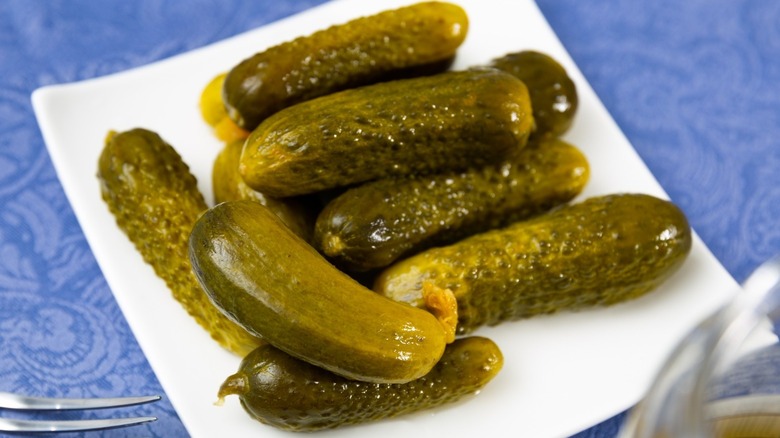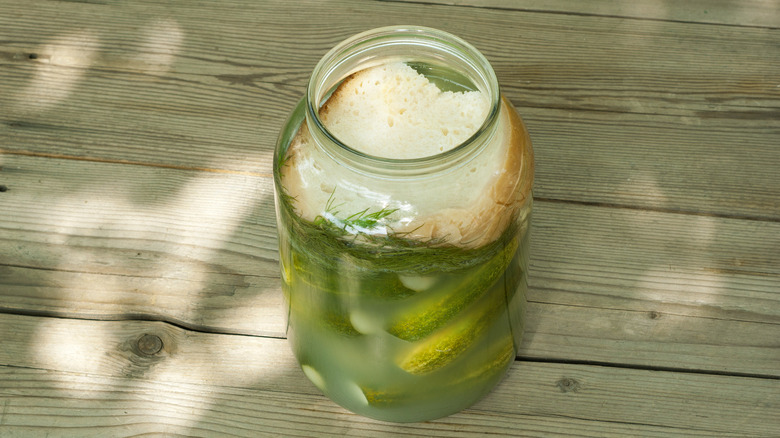The Unconventional Way Hungarian Pickles Are Fermented
Unlike other types of pickles, Hungarian-style pickles don't need darkness for fermentation to take effect. Additionally, this kind of pickling requires a unique ingredient.
When the word "pickles” is used, we often think of members of the cucumber family and sometimes the brine they are soaked in. However, pickles are anything that ferments in brine (like pickled vegetables), as per Merriam-Webster's definition. According to ScienceDirect, the pickling process ferments, preserves, and processes. The results are fruits, vegetables, meats, and other ingredients that are no longer raw or susceptible to spoilage bacteria.
According to Mountain Feed, there are two main methods of pickling: namely; the vinegar brine method, which uses a combination of water, salt, and vinegar, and the wild/natural method, where salt is used to draw out the moisture from the food and create a brine. The wild-fermentation method relies on a container called a crock to keep the food item below the level of brine. Both vinegar-brine and wild-fermentation processes require darkness for bacteria to take effect. This is because any exposure to light will kill fermentation bacteria, per the University of Minnesota Extension.
The Hungarian pickle loves sunlight and bread
Hungarian pickles, on the other hand, are made in the warmer months to benefit from the sunny conditions and higher temperatures for the growth of healthy bacteria. Unlike the usual style of brine-based preservation, the best place to leave the jar for these particular pickles is on a windowsill in full sunlight, per The Spruce Eats.
Pickling or kosher salt (the best salts for brining), medium cucumbers, fresh dill stalks, cloves of garlic, and distilled water are what are needed to make Hungarian pickles, per BigOven. Up to this point, these are the standard ingredients for making pickles at home (though many methods use vinegar). But there's one more unique ingredient in Hungarian pickles: bread.
According to a contributor on Stack Exchange, bread serves as a nutritional source for the lacto-bacteria needed to start the pickling process. The bread creates an initial food source and ideal conditions for the food-safe bacteria to proliferate. Per Taste Hungary, the same process occurs when making kimchi and sauerkraut, only without the bread. The bacteria produced eventually feeds on the sugar in the cucumbers and creates lactic acid as a byproduct. This then results in a tangy, sour taste and an eradication of spoilage bacteria, explains Science of Cooking. Three days later, the Hungarian pickles are ready to be enjoyed with rye bread and goat butter or, as Taste Hungary suggests, in a cold soup called kovászosuborka leves.

